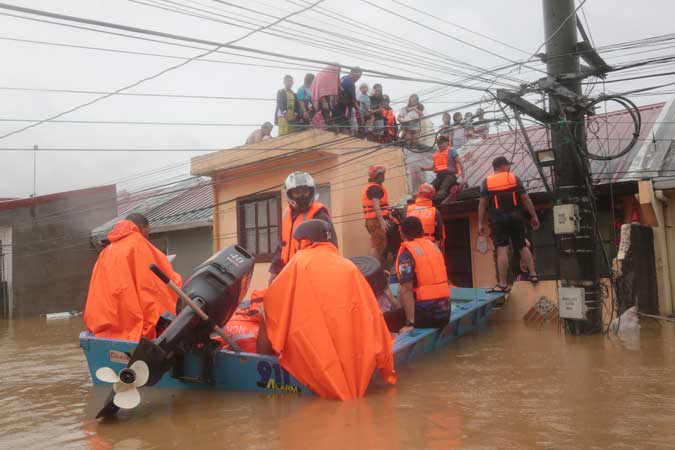
THE National Government should incorporate disaster risk considerations in preparing budgets, in order not to hamper the response to emergencies, the World Bank said Tuesday.
“There is a need to strengthen the integration of disaster risk in fiscal strategy and develop pre-disaster rehabilitation and recovery plans of National Government agencies for ready implementation. Second, risk considerations and disaster risk reduction measures need to be integrated in government overall planning to ensure adequate budget allocation,” the bank said.
It found that government spending on disaster risk management remained flat between 2015 and 2018 at around 0.6% of gross domestic product (GDP) or 4.3% of the overall annual budget. A third of the funding was from money specifically set aside for such contingencies while the rest came from budget realignments. The bank also noted that disbursements are also often delayed.
Speaking at a forum arranged by the World Bank Wednesday, Quirino Province Governor Dakila Carlo E. Cua said there is a need for closer cooperation between the National Government and the local government units (LGUs) in budget planning, to develop a better picture of the latter’s financial capacity and their funding needs.
“Some LGUs are affluent, some provinces can get by, but some municipalities really need a lot of assistance, so (funding) really has to be contextualized. More granular planning is critical here. Since LGUs possess more data and more concrete information, allow them to consult more with the National Government and you will come up with a better plan,” according to Mr. Cua, who is also the president of Union of Local Authorities of the Philippines.
The Philippines was hit by several typhoons last month, affecting the Bicol region, the Cagayan Valley and Metro Manila, while also battling the pandemic. The calamities come on top of the Taal Volcano eruption early in the year.
At the forum, Finance Secretary Carlos G. Dominguez III said the government will include more disaster risk mitigation efforts when drafting fiscal plans in the wake of the pandemic and the typhoons.
“We will strengthen the integration of disaster risk mitigation in our fiscal strategy. We will also explore innovative financing structures to proactively protect the fiscal health of our government against adversities,” he said in his keynote speech.
“We are also committed to deploy financial tools to build resiliency from the household to the national levels. We will constantly widen the inclusivity of our financial system by increasing the use of modern technologies,” he added.
The Philippines is among the most disaster-prone countries in the world with at least 60% of its total land area and 74% of the population exposed to various natural disasters, the World Bank said. The bank estimated earthquakes and typhoons caused $3.5 billion or more than one percent of GDP worth of damage to public and private assets.
“Natural and man-made disasters can cause severe economic and fiscal shocks by generating unplanned expenditures that drain public finances and lead to budget volatility. They are contingent liabilities for the government which tend to shoulder a significant share of the cost for response and recovery,” the World Bank said in its report.
It said the government could improve disaster risk financing to boost its financial resilience by making disaster-related funding requirements more predictable
Investing in “green” infrastructure and communities could also temper future unexpected liabilities as the move boosts the country’s resilience against disasters and climate change. — Beatrice M. Laforga

